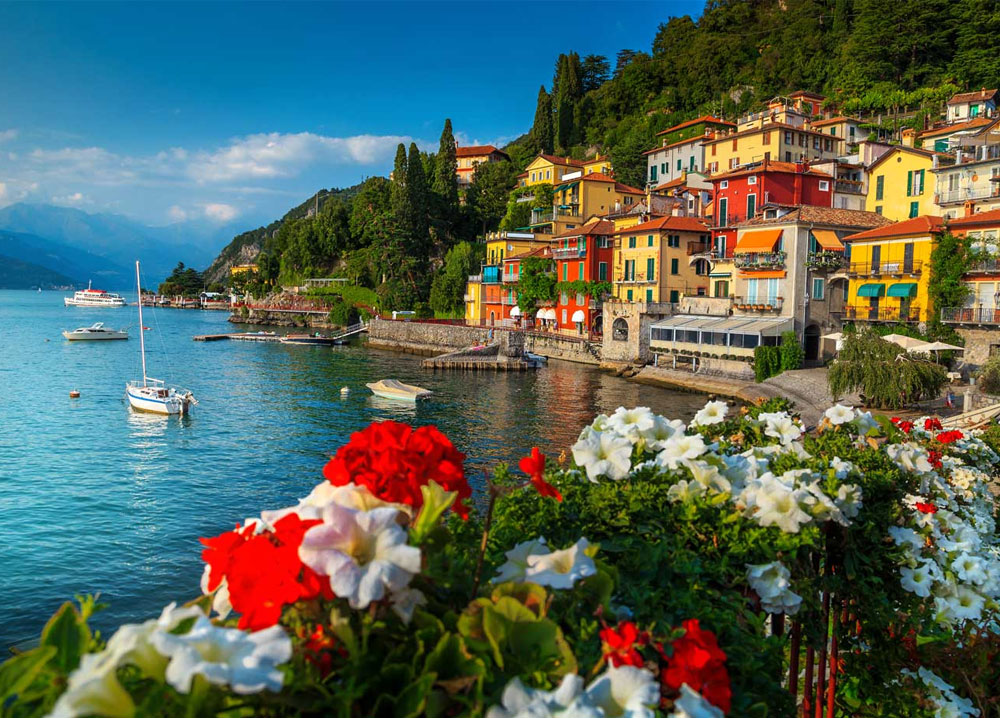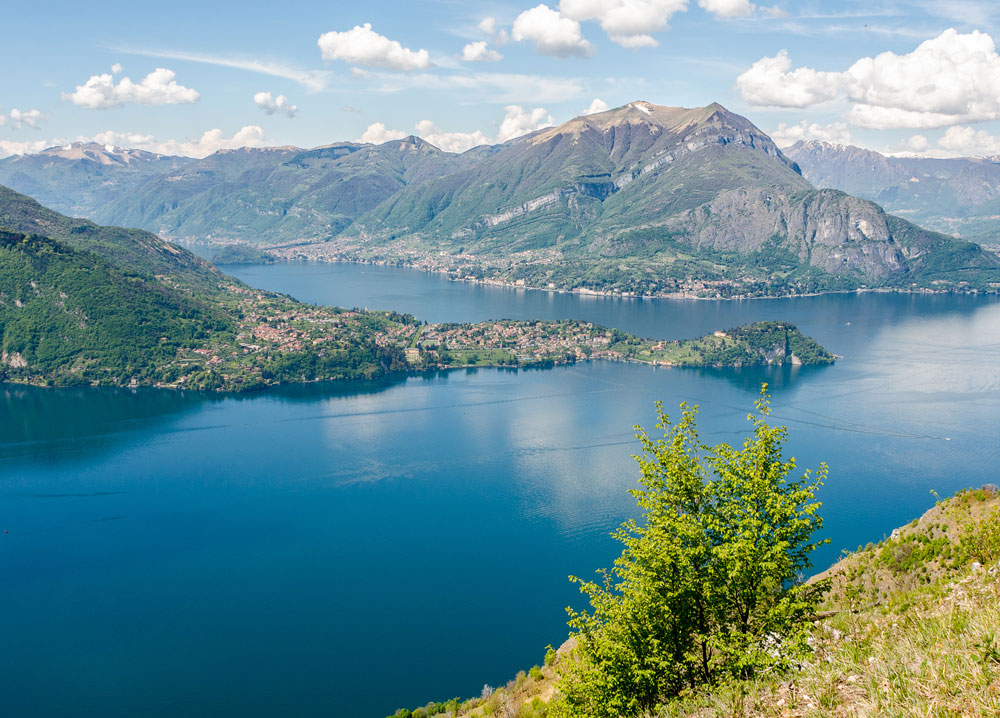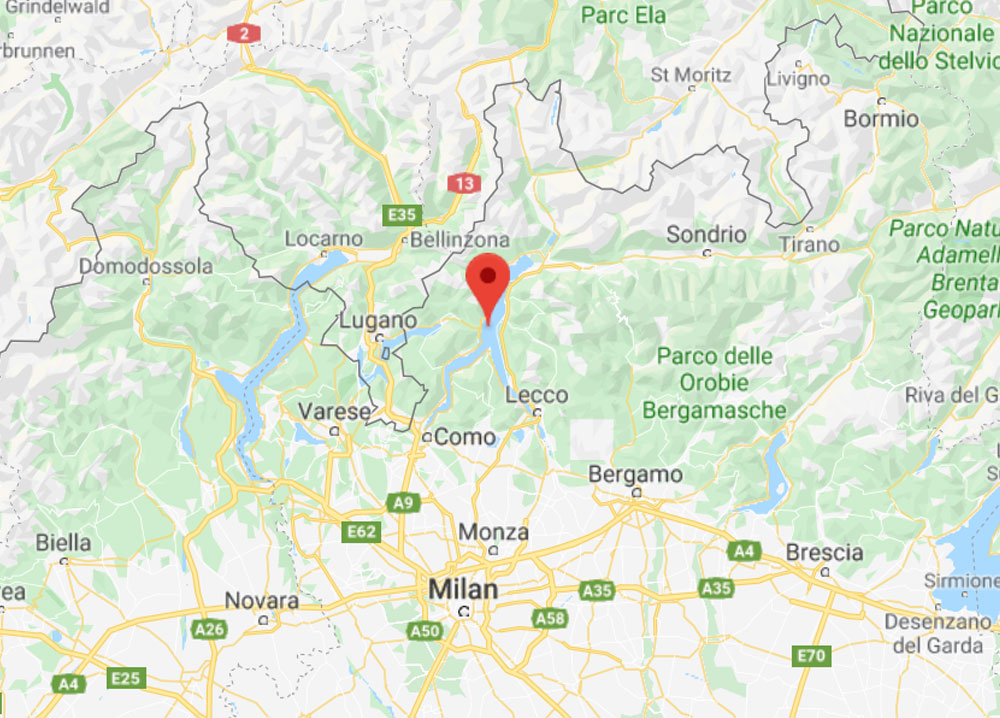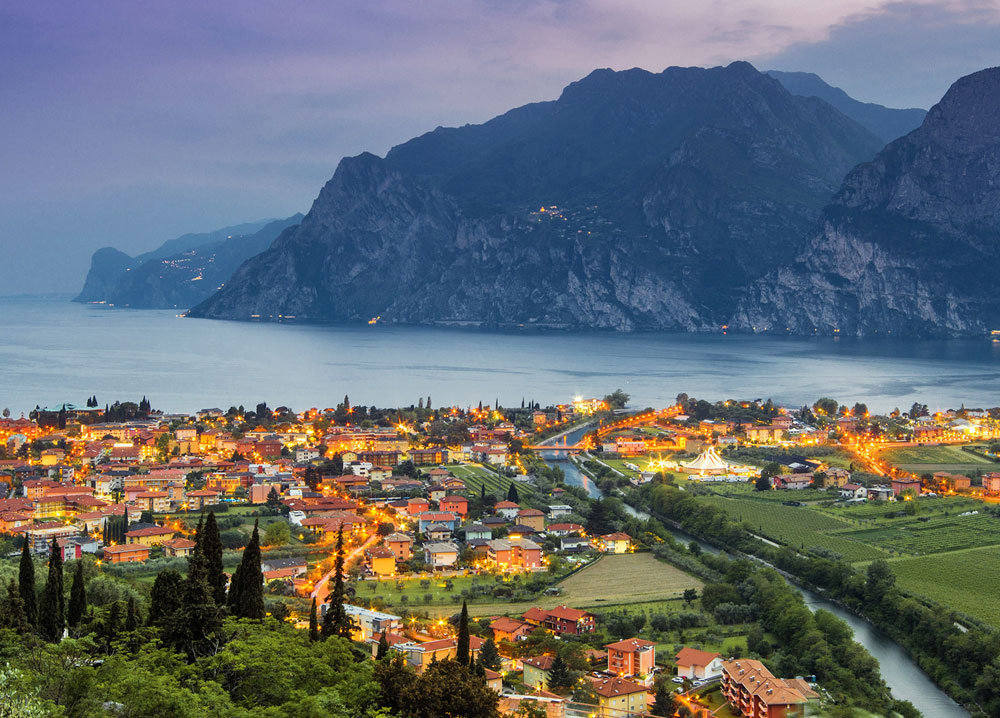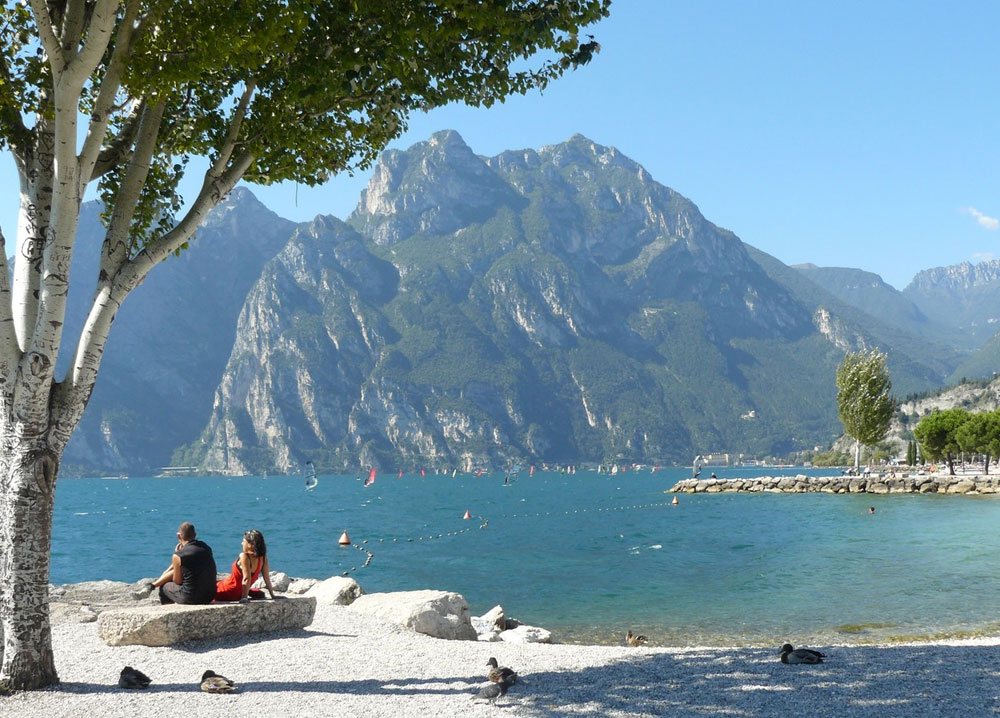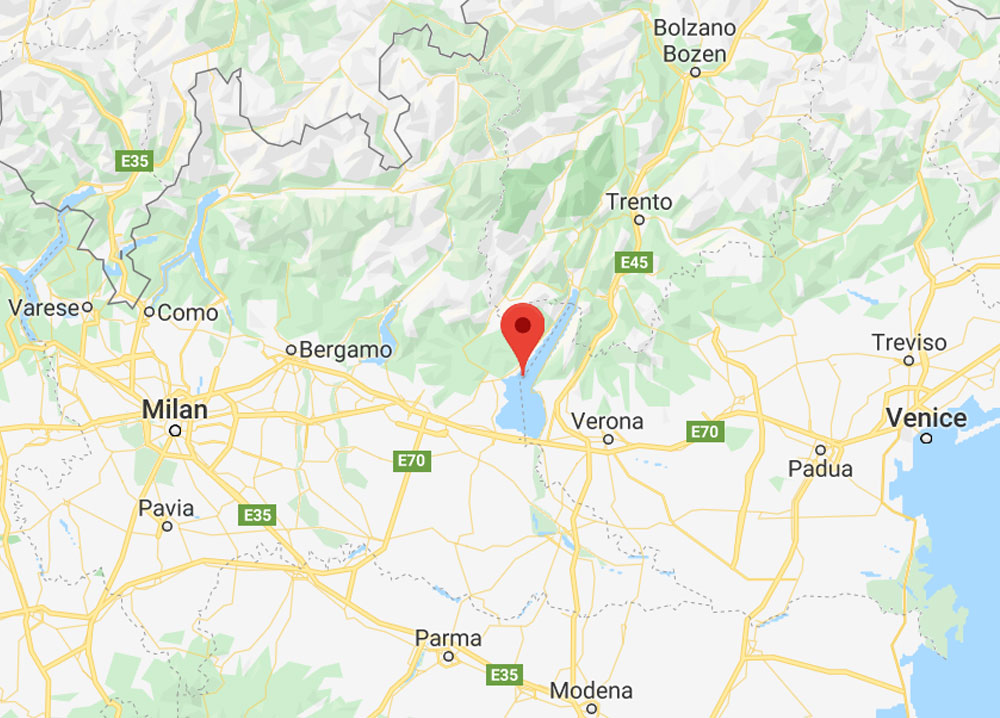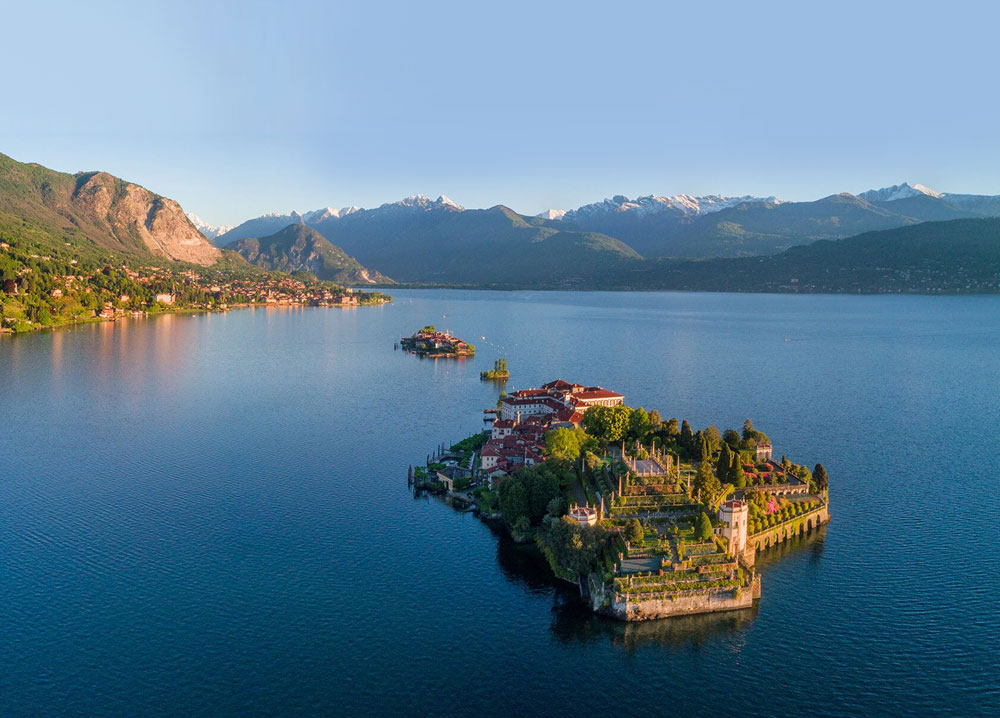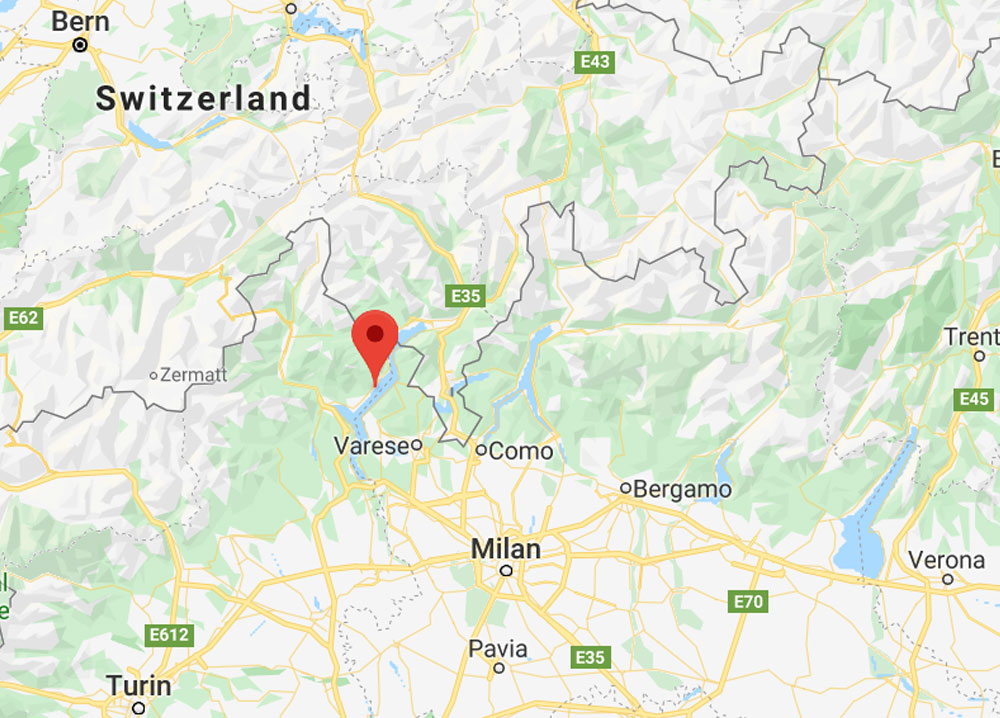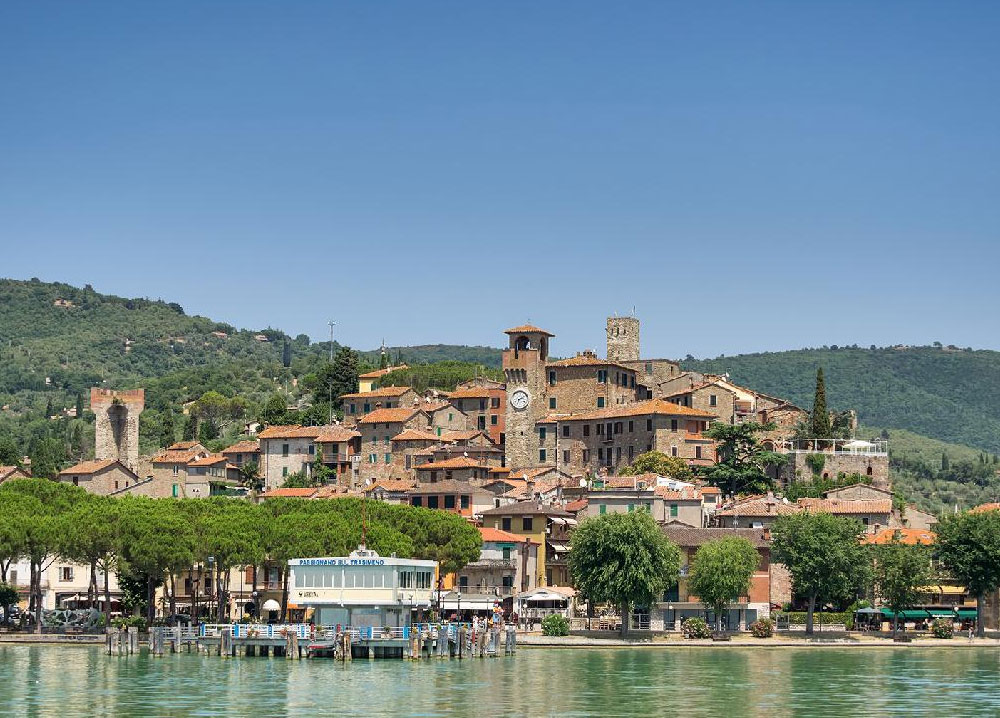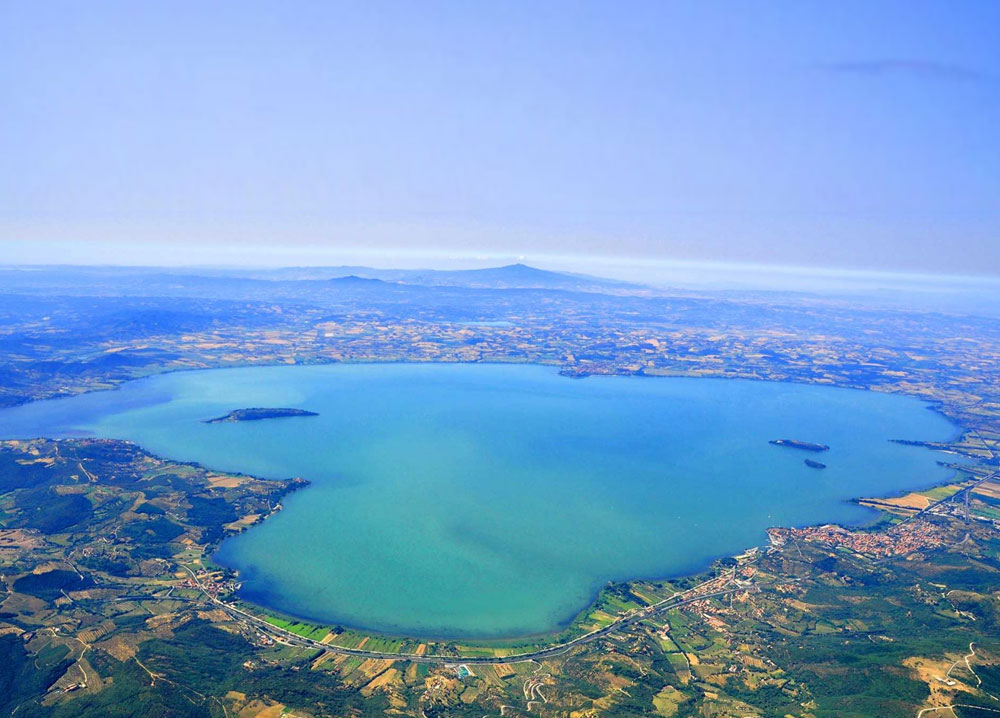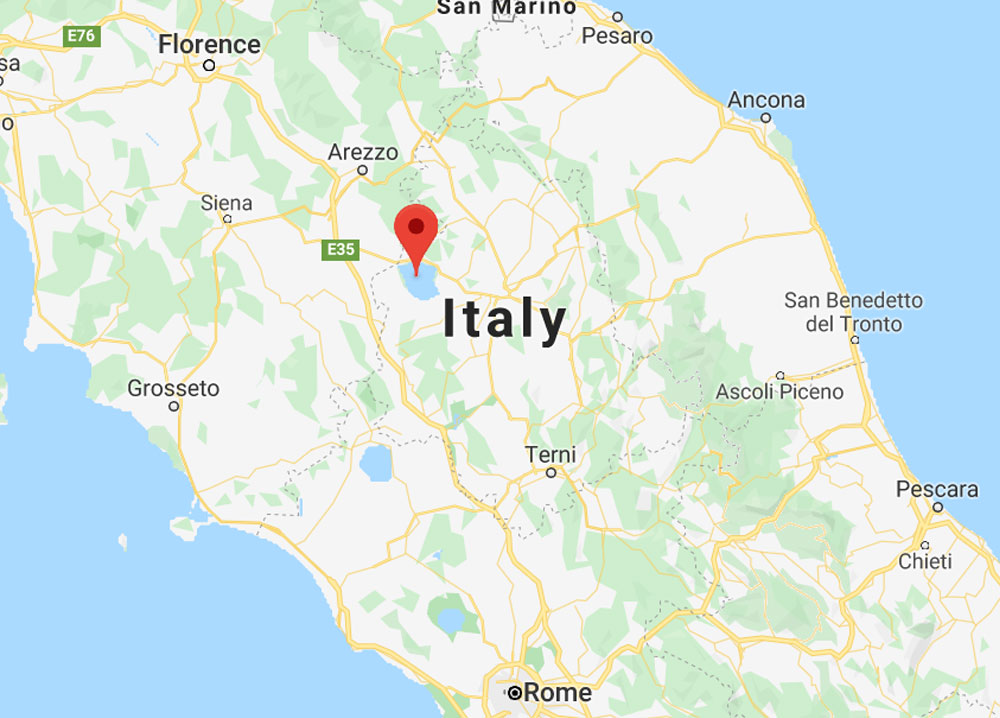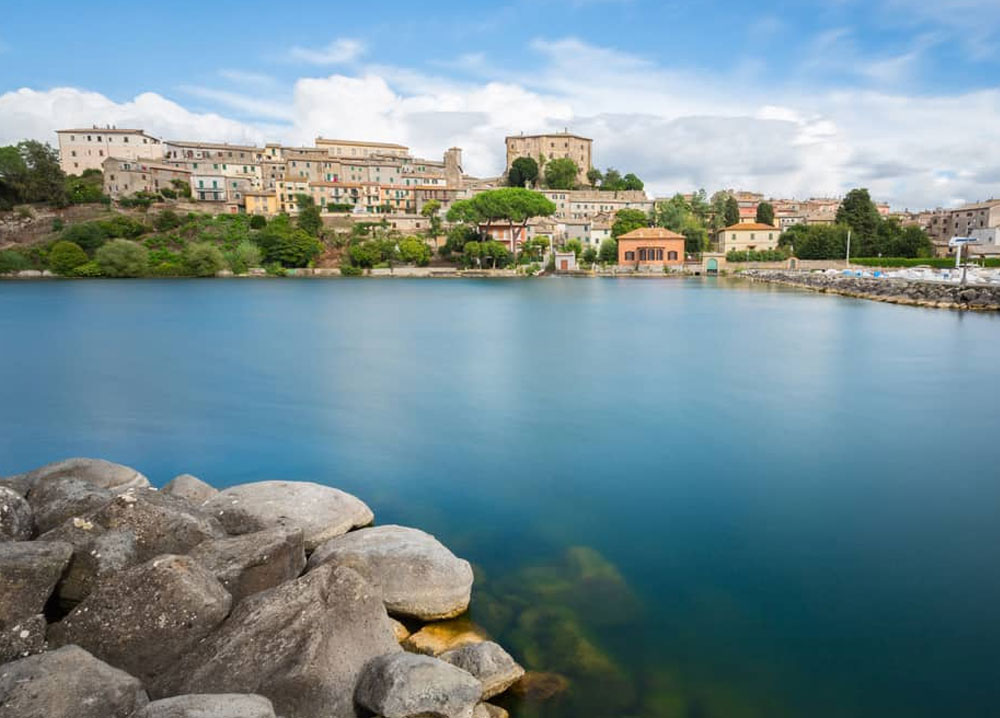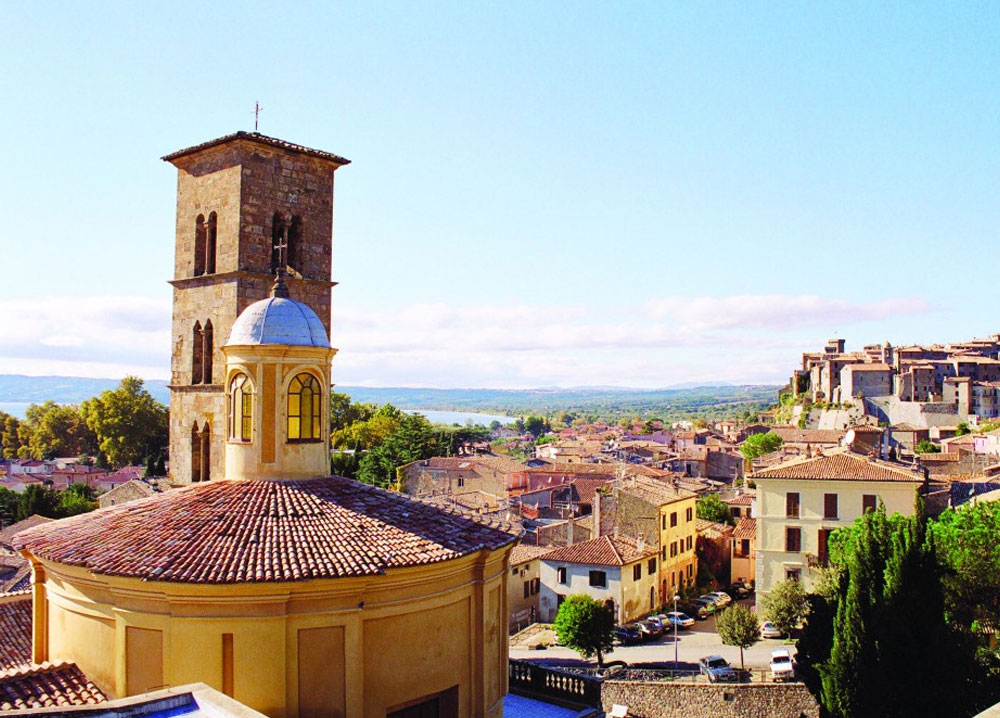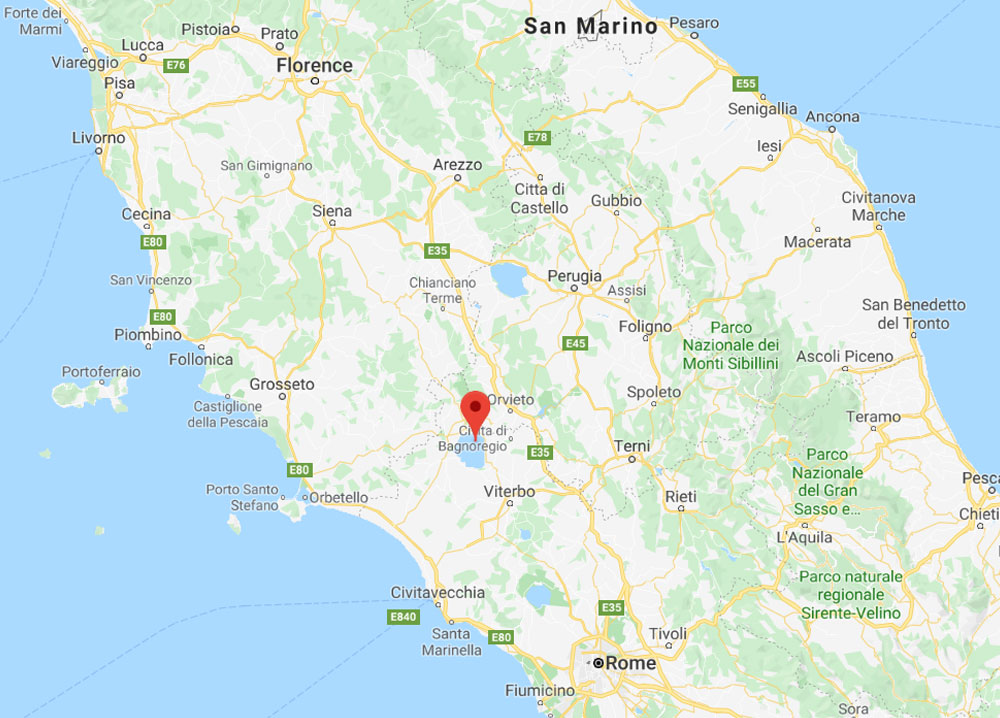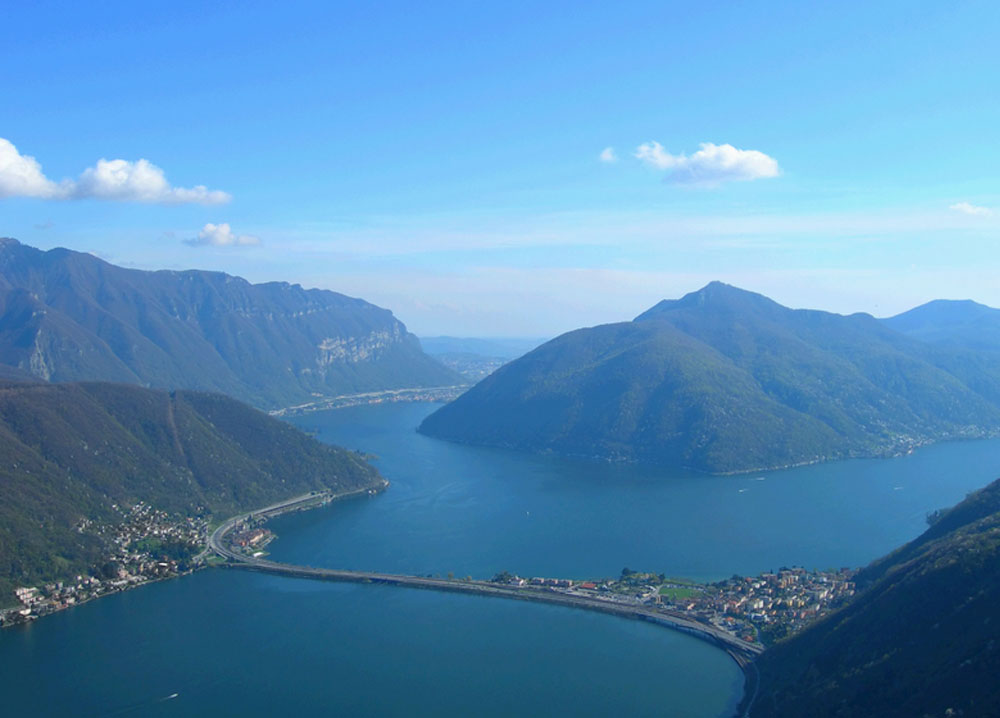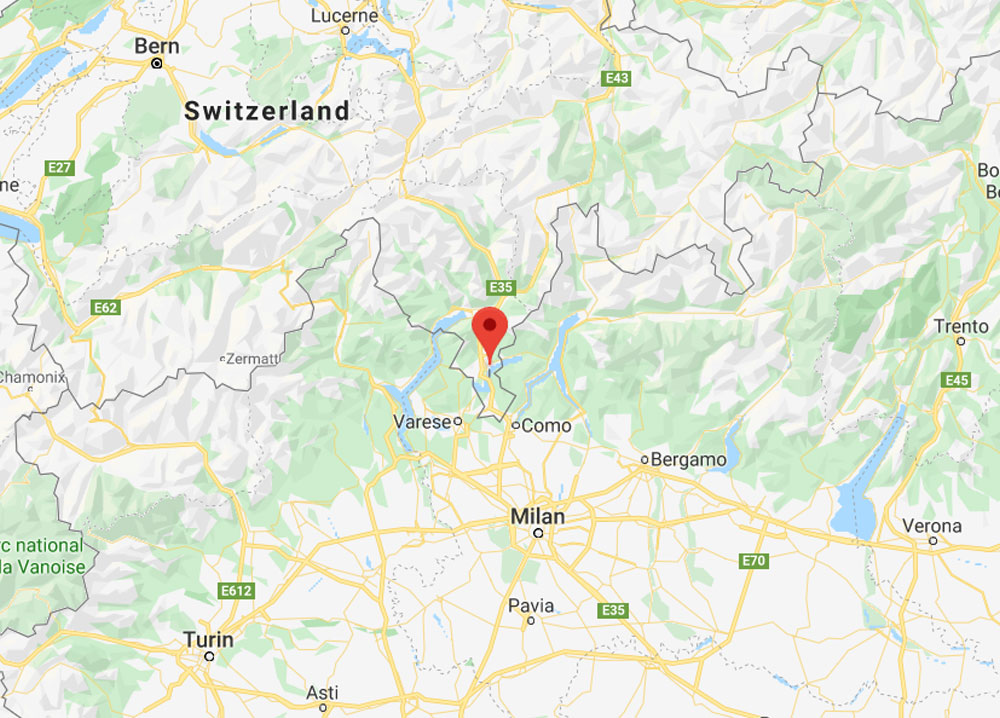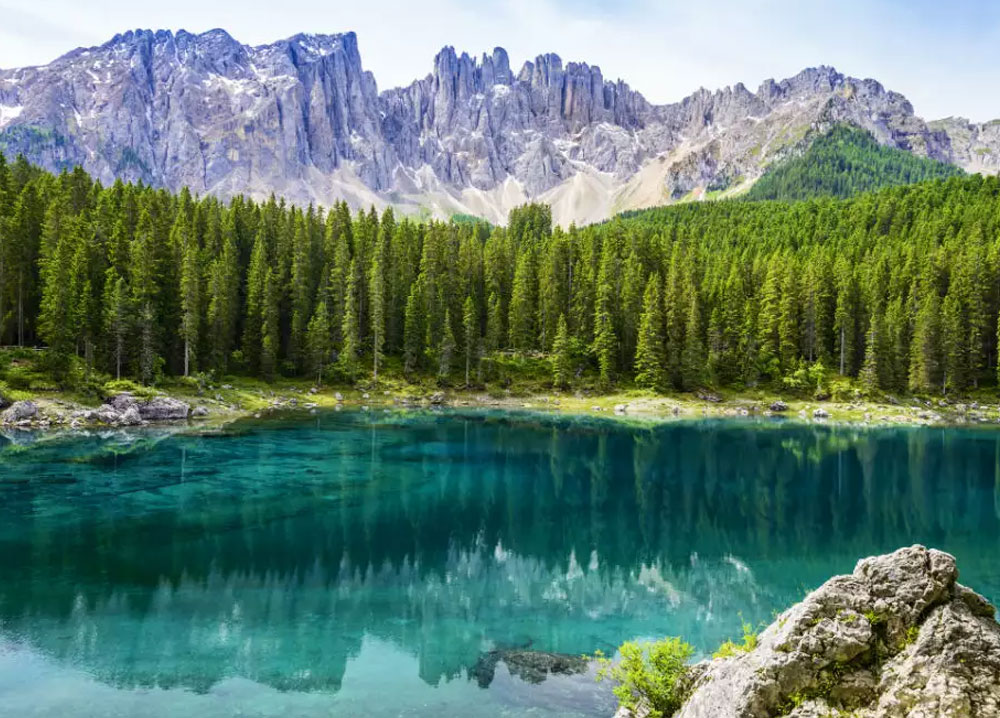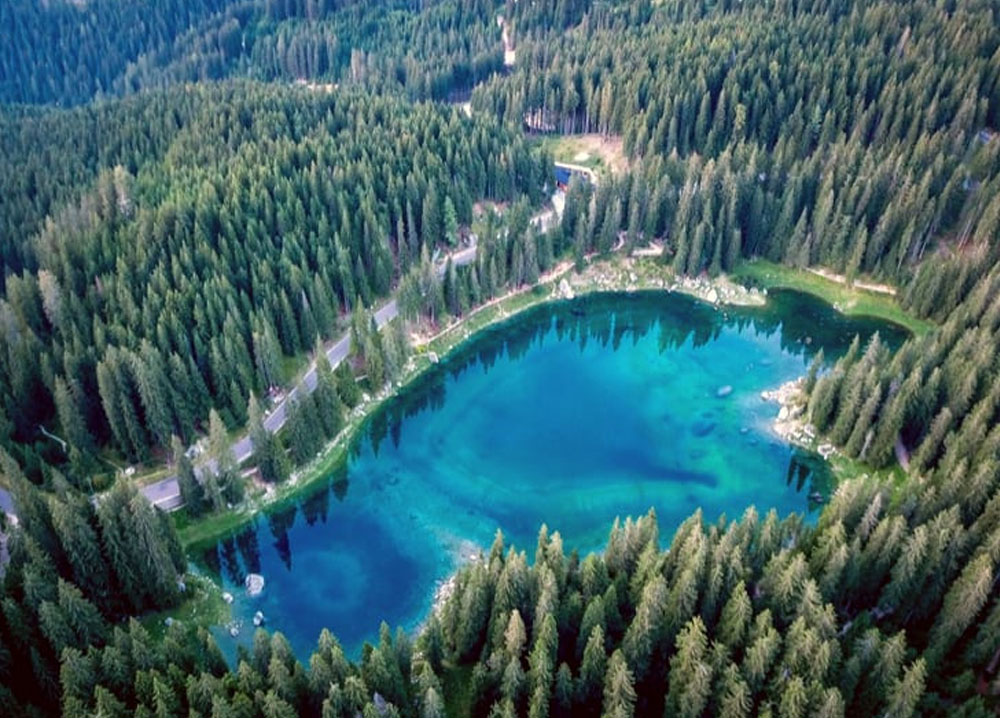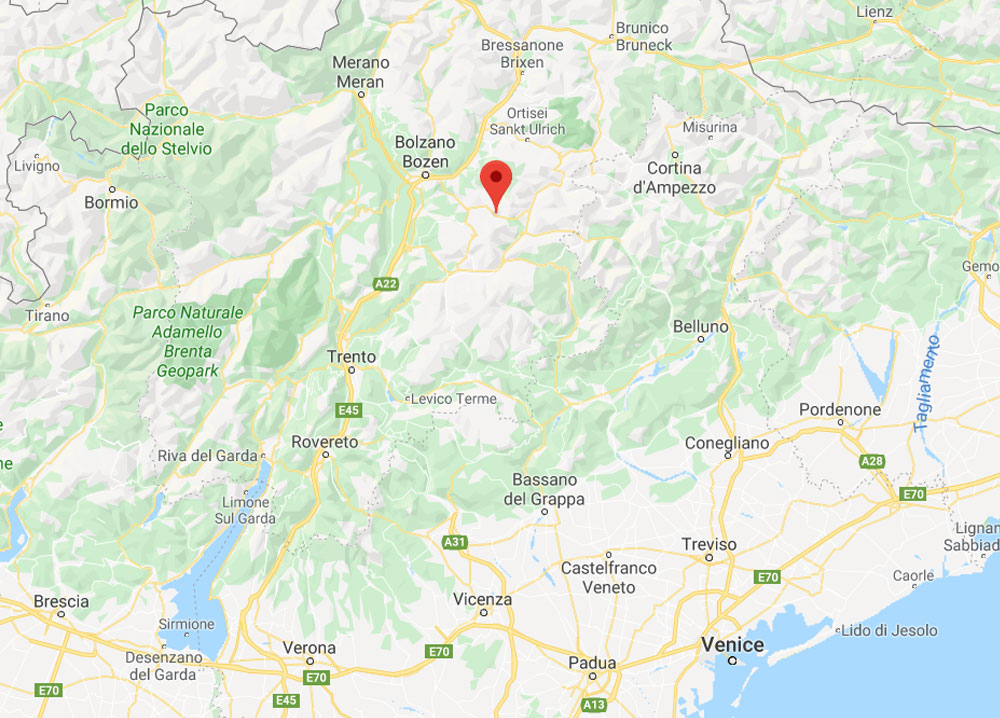Exploring Lakes of Italy
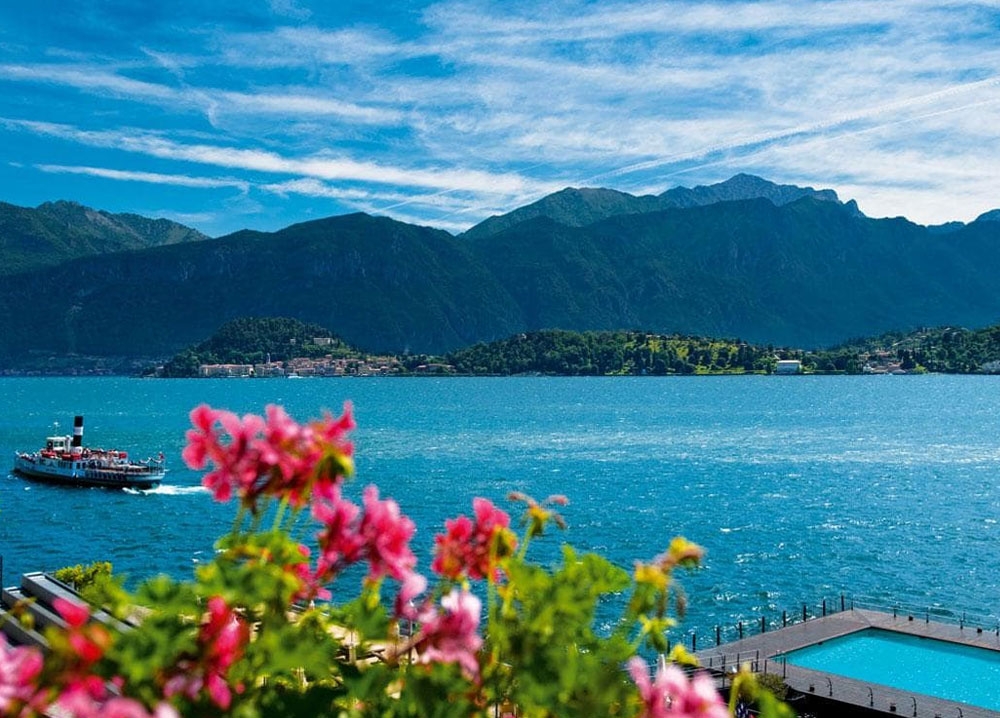
Italy boasts more than 1,500 lakes, the largest of which are in the north where the Alps form a mountainous boundary with countries farther. Three of the lakes – Garda, Maggiore and Como – are Italy’s largest and famous around the world. However, the fourth- and fifth-ranked (by size) lakes – Trasimeno and Bolsena – lie farther south and present with unforgettable views.
While we absolutely love many picturesque lakes in Italy, there is no way we can share them all with you or talk about all the 1,500 lakes. So we created a list of our seven favourite lakes that will make your trip to Italia so much more memorable.
We think this list may be especially helpful for our sun loving travellers with the mantra of “a great vacation must always include plenty of sun and a great body of water”.. And for those who really enjoy beautiful lake and mountain vistas, and quaint little towns you will absolutely love this.
Lake Como
Lake Como, also known as Lario, isn’t the largest of the Italian lakes but, with a maximum depth of approximately 410 meters, is also one of the deepest lakes in Europe. Located at the foot of the Alps, Lake Como provides some of the most picturesque scenery in the world. If you’re going to visit the Italian lakes, Lake Como is a must on your itinerary. Here, you’ll be surprised to learn about the many things to do and see!
Lake Como is one of the most popular destinations in Italy. No wonder! This is a very beautiful and restful spot. However, not many know that this place isn’t just a pretty surface (and depth, as the lake is pretty deep!). The Lake has a very interesting history. It is of glacial origin, dating back to the last Ice Age, around 10,000 years ago. It’s famous ‘Y’ shape was formed from the movement of an enormous glacier, which also displaced the huge mounds which now form the promontory, known as Bellagio which divides the two ‘legs’ of the lake.
Lake Como has been home to various nations. Napoleon ruled Como for a short period between 1796-1815, until power was restored to Austrian rule after the Congress of Vienna. And it wasn’t until 1859 that Lake Como became part of Italy under the House of Savoy after Giuseppe Garibaldi defeated the Austrians at the battle of San Fermo.
Stars including George Clooney Madonna and Richard Branson have all famously owned homes on Lake Como and it continues to be a firm celebrity favourite for a holiday. This isn’t a surprise though – Lake Como is impossibly beautiful and also packed with things to do and see.
We can help you plan a thrilling or relaxing holiday on Lake Como selecting the best accommodation, routes to explore and activities to enjoy. Give our team a call on 1800 242 353 on chat online.
Lake Garda
Lake Garda is Italy’s largest lake reaching from the steep alpine foothills to the northern edge of the Po Valley. The southern shore is lined by beaches and backed by low hills, while in the north, mountains and sheer cliffs fringe the lake, especially along the western shore. Its terrain gives the lake a wide variety of attractions for sports-loving tourists, from steady winds for sailing and windsurfing to mountains for climbing, rappelling, and mountain biking, all with lake views.
Interestingly, the lake began to form approximately 1.5 million years ago, from a glacier. The large mass of ice slid to the base of the mountains, starting to melt, forming the largest natural freshwater lake in Italy. The human history at Lake Garda began around 300 BC, when the lake became part of the Roman Empire. Later, some of the world’s first classical musical instruments were invented in towns surrounding the lake. Lake Garda is a rich Italian destination with interesting history and beautiful views.
One of the ways to explore lake Garda is to embark on a round trip of the lake, which is about 150km. Potentially you could do it in one day, however the roads are narrow and the traffic is very busy so some knowledge and experience which our Europe Holidays team can provide will certainly be helpful. You are welcome to reach out to our team to plan the best adventure around the lake – just give us a call on 1800 242 353 on chat online.
If you aren’t in the rush to see the entire region, enjoy the local traditional Italian markets. These markets aren’t just for food – you can buy Italian leather goods, pottery, tapestry, clothing and much more. And to top up your relaxing day here, book a half-day wine and tasting tour, check out local villages at your own pace or hoop on a tour to nearby Verona for a day. There are myriads of ways to structure your time on the lake. We’d be happy to help you plan the best holiday in Italy.
Lake Maggiore
While Lake Como has long been the number one lake to visit in Italy, Lake Maggoire once held the crown in popularity. Lake Maggiore is one of the most beautiful Italian lakes and has enchanted the great Italian and foreign artists who have stayed here. And although Maggiore is best enjoyed between May and October, its climate is relatively mild throughout the year, producing a bounty of Mediterranean vegetation and exotic flora that can be viewed in one of the many beautiful gardens located on its shores.
Interestingly, the very first archaeological findings around the lake belong to nomadic people living in the area in prehistoric types. The first settlements discovered date from the Copper Age. The area was later under the control of the Ligures, replaced by the Celts not long after. The latter was in turn conquered by the Romans, who called the lake Verbanus Lacus or Lacus Maximus.
A vacation in Lake Maggiore represents a very wonderful mixture of relaxation and culture, with enchanting and breathtaking views that allows you to experience the feeling of the belle époque. While on Lake, it’s worth visiting the Borromean Islands. Consisting of three small islands and two islets the Islands collectively boast lush gardens, palaces and a small town. Boats that operate a hop-on/hop-off style service can be caught from the shores of Verbania or Stresa.
Lake Trasimeno
Surrounded by the hills of the Umbrian countryside, Lake Trasimeno is the fourth largest lake of Italy with its surface of 128 square kilometers. Three million years ago the location of Lake Trasimeno was a shallow sea. Today, half the shoreline of the lake is surrounded by hills, which are covered with olives.
Close to Tuscany on the western shores of the lake, there are plenty of vineyards and the area is known for its vegetables and fruits. The lake is home to myriads of small towns. Places like Borghetto, Castiglione del Lago, San Arcangelo, San Feliciano, Torricella, Monte del Lago, Tuoro and Passignano sul Trasimeno. The longest shore of the lake is in Castiglione del Lago. There are also several small villages, castles and towers in the area, which are worth seeing.
But it’s not only castles and natural beauty that lure travellers to this fascinating area but also the mythology here. As the story goes, Trasimeno is a mythological figure who joined a nymph from Agello called Agilla. Today, Agello is between Trasimeno and Perugia, but it was once an island in the lake. The northern shore of the lake was the location of the Battle of Lake Trasimeno, which took place in 217 BC.
Lake Bolsena
Lake Bolsena is sometimes called Italy’s belly button from its shape and location in the middle of the peninsula. It is located about 100 km north of Rome and is surrounded by the beautiful landscapes of Northern Lazio, sometimes called Tuscia, and has borders close to Umbria and Tuscany. Bolsena is a wonderful holiday destination, filled with interesting history and stories.
Rarely overcrowded, and abundant with beautiful black volcanic sands, it is the largest volcanic lake in Europe, with a circumference of 43km, and an incredible history. 370,000 years ago the collapse of land following the eruption of the Vulsini volcano (active until 104 BC) formed a caldera which then became the bed of Bolsena’s lake. There are two islands, Bisentina and Martana, in the southern part of the lake which were formed by underwater eruptions following the collapse that created the caldera.
Lake Lugano
Lake Lugano and the surrounding area had always been an area of strategic and military importance. The first account of a political body governing the area dates back to 818 AD. In 1000 AD the lake was under the control of the Bishop of Como and was the site of the war between Milan and Como, which was fought between 1218 and 1227 for control of the Alpine traffic in the area. This is one of the most interesting and picturesque spots in Italy. The city of Lugano is famous for its beautiful quasi-Mediterranean scenery, its Film Festival, and for being the residence of the Nobel Prize winner, Hermann Hesse.
And Lugano conveniently lies at the intersection of the Gotthard Panorama and the Bernina Express – two of Switzerland’s more scenic train rides. If you’d like to find out more about the train rides and/or plan your holiday here, just give us a call on 1800 242 353 on chat online – the northern Italian territory of Lake Lugano also promises laid-back holiday vibes and a certain authenticity and charm that only Italians do best.
Lake Karersee
Everyone holidaying in South Tyrol has to visit Lake Carezza, also spelled Karersee – the most gorgeous Alpine mountain lake! This small mountain lake is well-known for its soft, deep green waters and the exquisite view of the Rosengarten and Latemar mountain ranges.
According to legends, once upon a time there was a mermaid living in the lake, which wizard Masaré was in love with. In order to seduce her, the witch Lanwerda advised him to dress up as jewel merchant and throw a rainbow from Mt. Catinaccio to Mt. Latemar. That is what he did, but he forgot to dress up. So the beautiful mermaid detected him and forever disappeared in Lake Carezza. The wizard was angry and threw all the pieces of the rainbow as well as the jewels into the waters. That’s why Lake Karersee still features all the rainbow colours, appearing so fairytale-alike.

